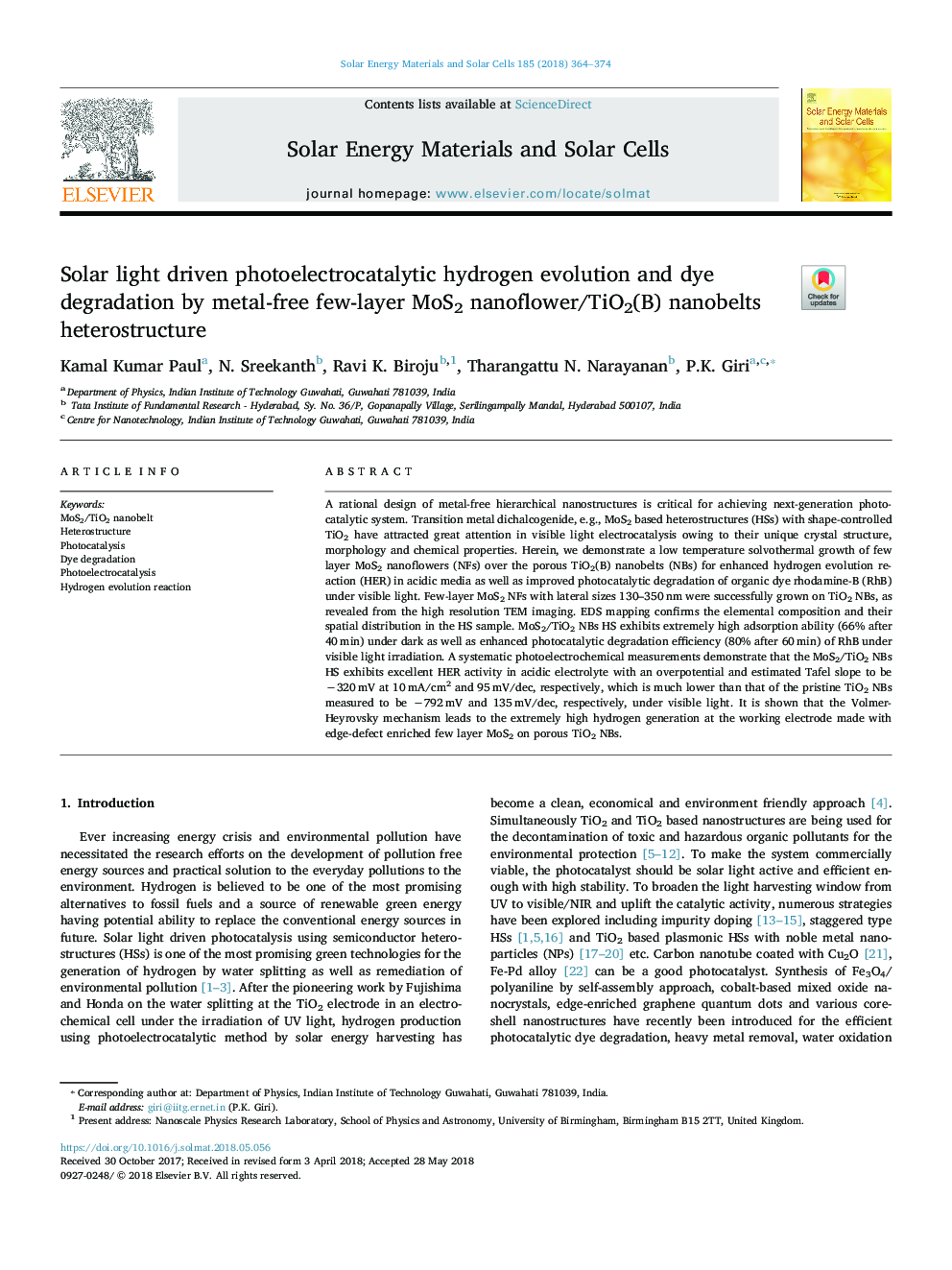| Article ID | Journal | Published Year | Pages | File Type |
|---|---|---|---|---|
| 6534004 | Solar Energy Materials and Solar Cells | 2018 | 11 Pages |
Abstract
A rational design of metal-free hierarchical nanostructures is critical for achieving next-generation photocatalytic system. Transition metal dichalcogenide, e.g., MoS2 based heterostructures (HSs) with shape-controlled TiO2 have attracted great attention in visible light electrocatalysis owing to their unique crystal structure, morphology and chemical properties. Herein, we demonstrate a low temperature solvothermal growth of few layer MoS2 nanoflowers (NFs) over the porous TiO2(B) nanobelts (NBs) for enhanced hydrogen evolution reaction (HER) in acidic media as well as improved photocatalytic degradation of organic dye rhodamine-B (RhB) under visible light. Few-layer MoS2 NFs with lateral sizes 130-350â¯nm were successfully grown on TiO2 NBs, as revealed from the high resolution TEM imaging. EDS mapping confirms the elemental composition and their spatial distribution in the HS sample. MoS2/TiO2 NBs HS exhibits extremely high adsorption ability (66% after 40â¯min) under dark as well as enhanced photocatalytic degradation efficiency (80% after 60â¯min) of RhB under visible light irradiation. A systematic photoelectrochemical measurements demonstrate that the MoS2/TiO2 NBs HS exhibits excellent HER activity in acidic electrolyte with an overpotential and estimated Tafel slope to be â320â¯mV at 10â¯mA/cm2 and 95â¯mV/dec, respectively, which is much lower than that of the pristine TiO2 NBs measured to be â792â¯mV and 135â¯mV/dec, respectively, under visible light. It is shown that the Volmer-Heyrovsky mechanism leads to the extremely high hydrogen generation at the working electrode made with edge-defect enriched few layer MoS2 on porous TiO2 NBs.
Keywords
Related Topics
Physical Sciences and Engineering
Chemical Engineering
Catalysis
Authors
Kamal Kumar Paul, N. Sreekanth, Ravi K. Biroju, Tharangattu N. Narayanan, P.K. Giri,
